A few weeks ago, I spent an hour at the Black-crowned Night Heron colony on the Leslie Street Spit, watching the birds build their nests. The males were in their mating finery, which means bright plumage—cream-colored below, grey and slate-blue above—and two long, thin plumes that stick out of the head and arch over the back. Each male gathered twigs and tree limbs and delivered them to the nesting site the female had chosen. Then both birds arranged their material roughly into the shape of a nest or, more accurately, a nesting platform.
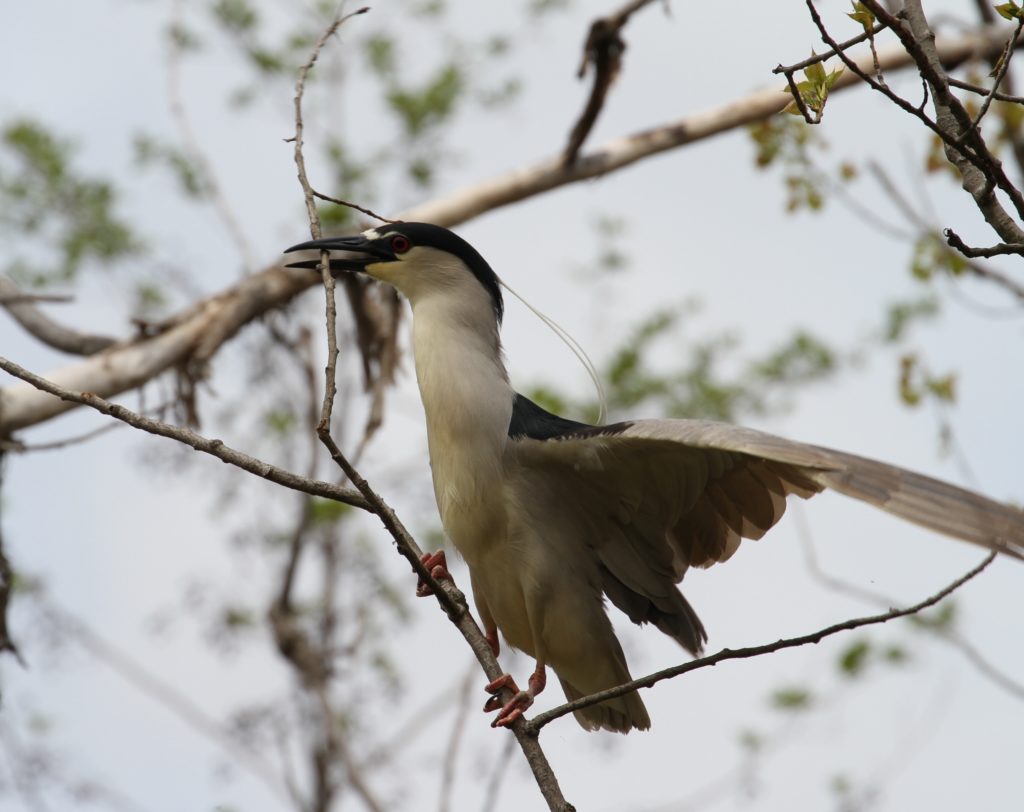
A male Night Heron doesn’t pick up fallen twigs from the ground. Instead he finds a dead tree and uses his bill to break off the limb that appeals to him. Sometimes this involves a wrestling match between tree and bird, but in the end the bird always prevails, even when the chosen stick is surprisingly long.
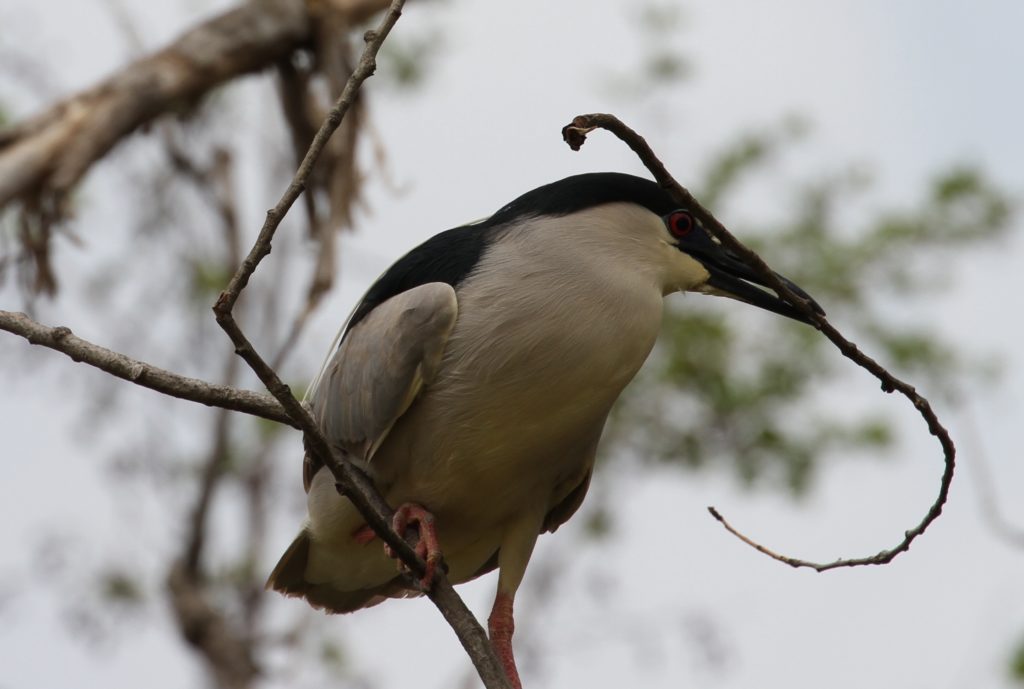
I returned after the flurry of construction had ended and the trees had all leafed out. It was hard to see the birds sitting on their nests but easy enough to hear them. Everything would be quiet, then suddenly a heron would scream. There was something desperate in the noise they made, something prehistoric or tropical. It always sounded more like a monkey in the jungle than a wading bird on the edge of the urban core.
My happiest discovery this summer was probably the colony of Cliff Swallows that built their nests under the eaves of the Visitor’s Centre on the Spit. The first time I saw them, the place was a mess. Cliff Swallows use mud—lots of mud—to fashion each nest into a globe with a tubular entry hole. According to Hal Harrison in his Field Guide to Bird Nests, a finished nest consists of anywhere from 900 to 1,200 individual mud pellets. Both the male and female bird collect the mud, and it can take up to two weeks to finish a single nest. Night Herons, by contrast, can finish off one of their stick piles in two days.
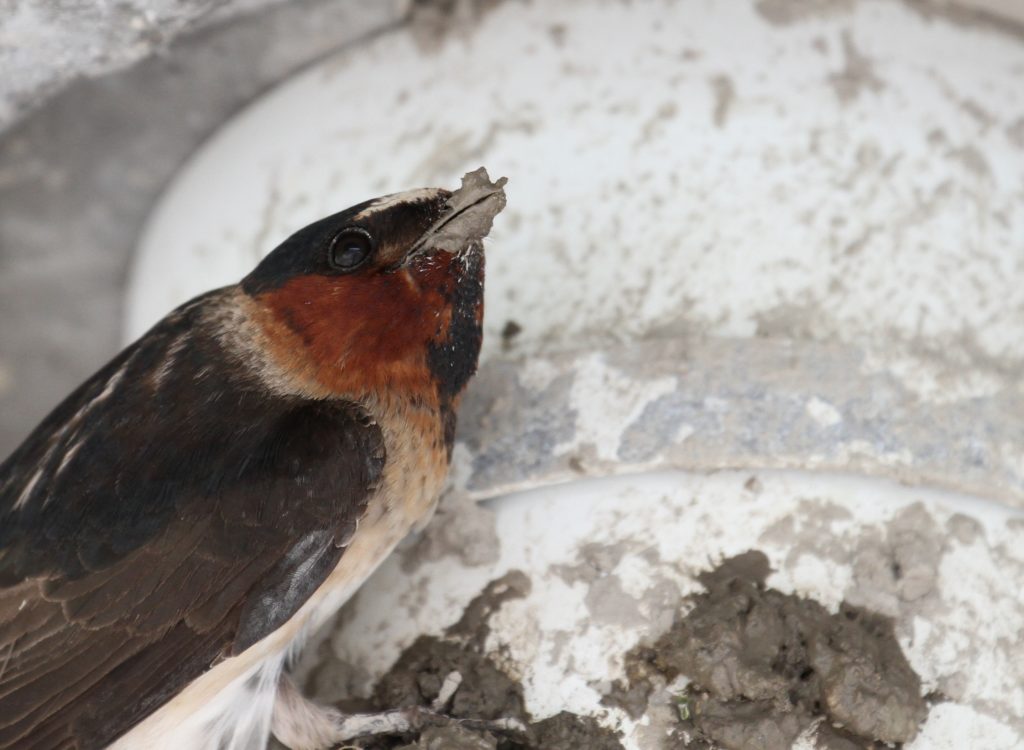
Even though there’s nothing dramatic about the plumage of a Cliff Swallow, it’s quite pleasing to the eye anyway. The brown wings shade to a black on the back that sets off the chestnut collar and buffy rump. There’s a light patch on the forehead that distinguishes the Cliff Swallow from other swallow species, especially in flight. While I was photographing the birds, I noticed that this patch resembles in color the dried mud of their nests. It’s as if the color of their natal home, the color of all that mud they collect to build their own nest, imprints itself so forcibly on their consciousness that it manifests in this bar of color above the eyes.
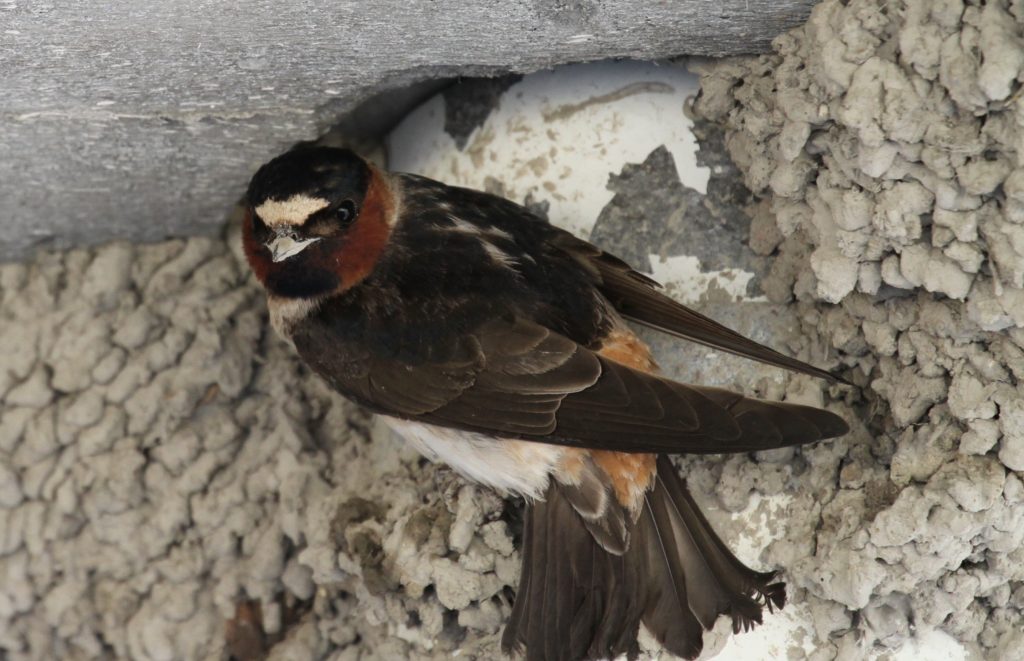
A nesting colony of Cliff Swallows is an impressive sight, resembling in some ways the adobe cliff houses of the Pueblo peoples in the American Southwest. But the most austere example of a nest site I’ve seen this summer belonged to one of our smallest birds, the House Wren. A pair of wrens moved into a drilled hole in the side of a hydro pole in High Park. They caught my attention by sitting on a nearby wire and trilling to some of their fledglings, who rested in a bush on the other side of the path and agitated their wings, demanding to be fed.
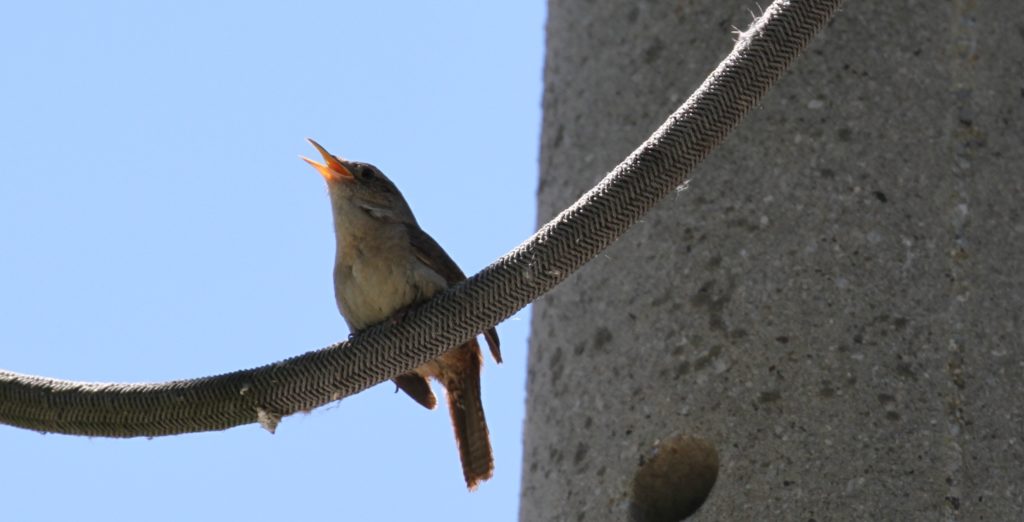
House Wrens usually have a clutch of six or seven eggs. How they all fitted into that miniscule space will forever be a mystery. But Harrison says this species is notorious for its choice of odd nesting sites: “[It] has nested in radiator of unused auto, top of pump, empty cow skull, leg of workpants on clothesline, flowerpot, pocket of scarecrow, boots, shoes, [and] in or on the nests of other birds.” Maybe this is the reason a few of us continue birding through the worst dog days of summer: that even the most common and familiar birds can still find a way to excite our wonder.
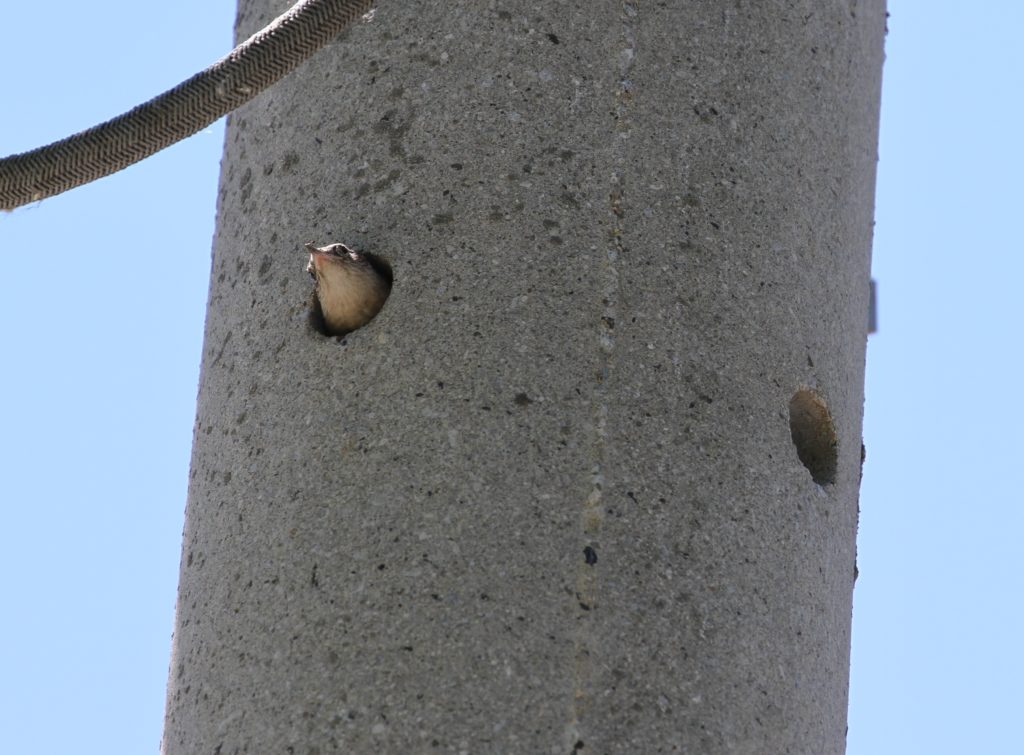
Trumpeter Swan Update
Just a quick visual update on the Trumpeter Swans I mentioned in my last post and who are raising their cygnets on the Spit. As you can see, even though the young birds are growing quickly, they’re still sticking close to their ange guardien, and they seem to have already mastered that neck-extension thing.
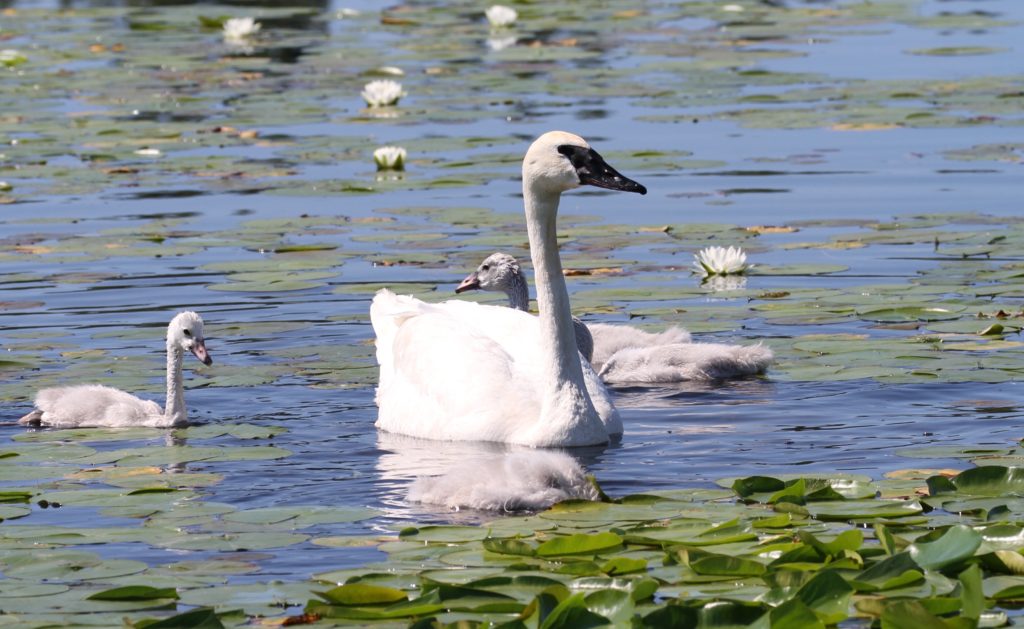
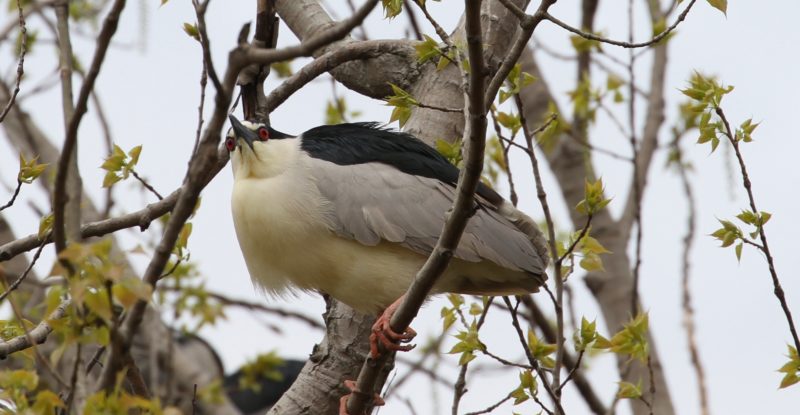
Here’s one for you, Ed. Last night, I was on my sister and brother-in-law’s sailboat in Bronte Harbour. Across a narrow channel, several large powerboats are tied up. At dusk, I noticed a pair of Barn Swallows approaching a small cavity for the bow anchor. I grabbed my binoculars and, sure enough, there was a nest. Apparently, the boaters take the craft out regularly but I guess they rarely use their bow anchor.
Thanks for the story, Barry. I had no idea Barn Swallows were so adventurous. But since they like the water, nesting on a boat in a way makes sense.